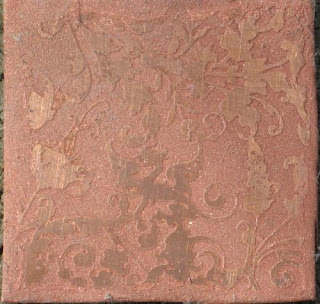Smithsonian American Art Museum and the Renwick Gallery
BIOGRAPHY
"Moty was drawn to jewelry and metalsmithing as an undergraduate student at University of Illinois at Champagne-Urbana. She was particularly interested in electroplating and photoetching. While at University of Illinois, Moty became acquainted with an expert technician in photoetching that worked in a well-equipped engineering lab. Moty worked with this equipment to produce high-quality photoetched plates and combined it with her electroformed and fabricated pieces. Eleanor Moty is noted for bringing the photoetching process into the metalsmithing field and integrating the process into her work. During her graduate education at Tyler School of Art she researched and developed photoetching equipment for the studio. Her first major electroformed and photoetched piece was shown in the Goldsmith 70 exhibition at the Minnesota Museum of Art. This research and development of the photoetching process was the basis of her entire professional development. Moty found a new direction for her work and uses rutilated quartz as a focus for her pieces.
Moty is the recipient of numerous grants and in 1975 the National Endowment for the Arts Craftsman Fellowship. She is published in several publications and has lectured on photoetching and her work. Moty is a distinguished member of the Society of North American Goldsmiths and the American Craft Association. Her exhibition record includes over one hundred solo, group, international and national exhibitions."
ARTICLES
Clowes, Jody. Metalsmiths and Mentors. Madison: The Board of Regents, 2006.
Google Book Search. Web. 31 Jan. 2011.
The following is a review of a show at the University of Wisconsin-Madison, which is also the same show that the book listed above entails.
Lewis, Frank C. "Metalsmiths and Mentors: Fred Fenster and Eleanor Moty at
University of Wisconsin-Madison." Metalsmith 27.2 (2007): 57. Academic
Search Complete. Web. 31 Jan. 2011.
QUOTES
“Edges, geometric volumes, diffractions, and reflections create a hyper-modern sense of order, but without the coldness of so much modernist design…an aesthetic grounded in the artist’s sensitivity to the formal qualities of materials.”
Lewis, Frank C. "Metalsmiths and Mentors: Fred Fenster and Eleanor Moty at
University of Wisconsin-Madison." Metalsmith 27.2 (2007): 57. Academic
Search Complete. Web. 31 Jan. 2011.
“She also continued to experiment with industrial processes, and her work from this period collages imagery, materials, and techniques in poetic, densely interwoven layers.”
“Moty set up a small lab to investigate electroplating and electroforming – and while still an undergraduate, she pioneered the use of photo-etching, photo-electroplating, and photo-electroforming processes in the studio environment, transferring photographic images onto metal to create surprising, evocative effects.”
Clowes, Jody. Metalsmiths and Mentors. Madison: The Board of Regents, 2006.
Google Book Search. Web. 31 Jan. 2011.
I am drawn to Eleanor Moty's work because of her exploration of the photo etching process at the beginning of her career. She obscures images and creates interesting, wearable items using multiple processes. Although not all of her work includes the etching process, her compositions and techniques are always interesting and intriguing. I enjoy the small scale of her work, while allowing the viewer to want to look closer and wonder what is going on. Her selection of images is interesting, and am excited to continue to research her work.
Fan Brooch
1981
Photo-etched sterling silver, abalone shell, silk thread
4 x 3 ½ in
Mirror Image
1974
Sterling silver, brass, amethyst, leather, mirror
2 ½ x 3 ¼ x ½ in
Dual Image Brooch
1974
Photo-etched sterling silver, quartz crystal, obsidian star
3 x 2 ¾ x ½ in
Interrupted Vertical Brooch
1990
Sterling silver, 27k and 18k gold, topaz, rutilated quartz
4 x 1 ¾ x ½ in









